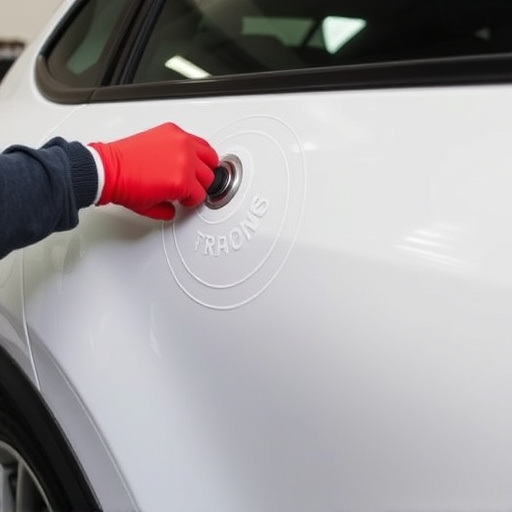The Mercedes TPMS monitors tire pressure, alerting drivers via indicators or beeps. Regular checks by a mechanic are vital for maintenance, diagnosing issues like leaks or damage. Perform a TPMS reset after visual inspections if needed, using onboard computer configurations, to prevent future complications and ensure vehicle safety and reliability.
Prevent future TPMS issues in your Mercedes vehicle with this comprehensive guide. The Mercedes tire pressure monitoring system (TPMS) is a vital safety feature, ensuring optimal performance and fuel efficiency. By understanding the basic functions of the TPMS and implementing regular maintenance, you can keep track of accurate readings. Learn how to troubleshoot and reset your tire pressure monitor effectively, addressing common problems before they escalate.
- Understanding Mercedes TPMS System Basics
- Regular Maintenance for Accurate Readings
- Troubleshooting and Resetting Tire Pressure Monitor
Understanding Mercedes TPMS System Basics

The Mercedes TPMS (Tire Pressure Monitoring System) is a sophisticated technology designed to ensure optimal vehicle safety and performance. This system continuously monitors tire pressure, using sensors located in each wheel to detect any discrepancies from the recommended PSI (Pounds per Square Inch). When a tire’s pressure deviates from the set point, an alert is triggered, warning the driver through a dashboard indicator or an audible beep. The system plays a crucial role in maintaining vehicle stability and handling by ensuring all tires are inflated appropriately.
Understanding how to reset the Mercedes tire pressure monitor is essential for car owners. Regular checks and maintenance are key to preventing future issues. If you notice a TPMS warning light, it’s advisable to consult a professional mechanic or an automotive repair service provider. They can perform diagnostic tests, locate any leaks or damage in the car bodywork services, and reset the system if necessary. Timely intervention by reputable vehicle collision repair experts is vital to avoid more serious problems related to tire underinflation or overinflation.
Regular Maintenance for Accurate Readings

Regular maintenance is key to ensuring your Mercedes’ Tire Pressure Monitoring System (TPMS) functions optimally and prevents future issues. It’s crucial to have a trusted mechanic perform routine checks, as they can provide accurate readings and identify any anomalies early on. This includes inspecting the sensors for damage or corrosion, checking valve cores for leaks, and verifying that each tire is inflated to the manufacturer-recommended pressure. Regular maintenance also involves cleaning the TPMS valves and ensuring they’re properly seated in the wheels. By prioritizing these steps, you can avoid unexpected TPMS problems and maintain your vehicle’s safety and efficiency.
For Mercedes owners, a critical aspect of maintenance is knowing how to perform a tire pressure monitor reset when necessary. This process refreshes the system’s memory, ensuring accurate readings after changes in tire pressure due to factors like temperature variations or load shifts. While some models offer automatic resets, others may require manual intervention, typically done via a button press or using specialized tools. Regularly resetting the TPMS as per the vehicle’s instructions can help extend its lifespan and prevent any potential issues that could impact fleet repair services or even necessitate an auto glass replacement due to accidents caused by tire failure.
Troubleshooting and Resetting Tire Pressure Monitor

Many Mercedes owners face TPMS (Tire Pressure Monitoring System) issues at some point, often requiring a simple reset to get back on track. Troubleshooting begins with a visual check for any obvious signs of tire damage or leaks, as these could trigger the system. If all appears well, it’s time to perform a Mercedes tire pressure monitor reset using the vehicle’s onboard computer. This process varies slightly between models but typically involves turning on the ignition, without starting the engine, and setting specific switches to activate the reset mode.
Once in reset mode, a code will be displayed, and you may need to confirm or repeat the sequence. After successfully resetting, ensure all tires are inflated to the recommended pressure specified in the vehicle’s manual. Regular maintenance and timely resets are key to preventing future TPMS issues, ensuring your Mercedes remains safe and reliable on the road. Remember, an auto body repair shop or frame straightening service isn’t always necessary for simple TPMS troubleshooting; often, a vehicle body shop visit can be avoided with some basic knowledge and quick checks.
By understanding the basics of the Mercedes TPMS system, conducting regular maintenance, and knowing how to troubleshoot and reset the tire pressure monitor, vehicle owners can proactively prevent future TPMS issues. Regular checks and proper maintenance ensure accurate readings, enhancing safety and optimizing tire performance for your Mercedes. Remember, a well-maintained TPMS system is key to keeping your vehicle running smoothly. For any persistent problems, consult a professional to avoid potential hazards on the road. Don’t forget, a simple Mercedes tire pressure monitor reset could be the solution to maintaining optimal tire health.














